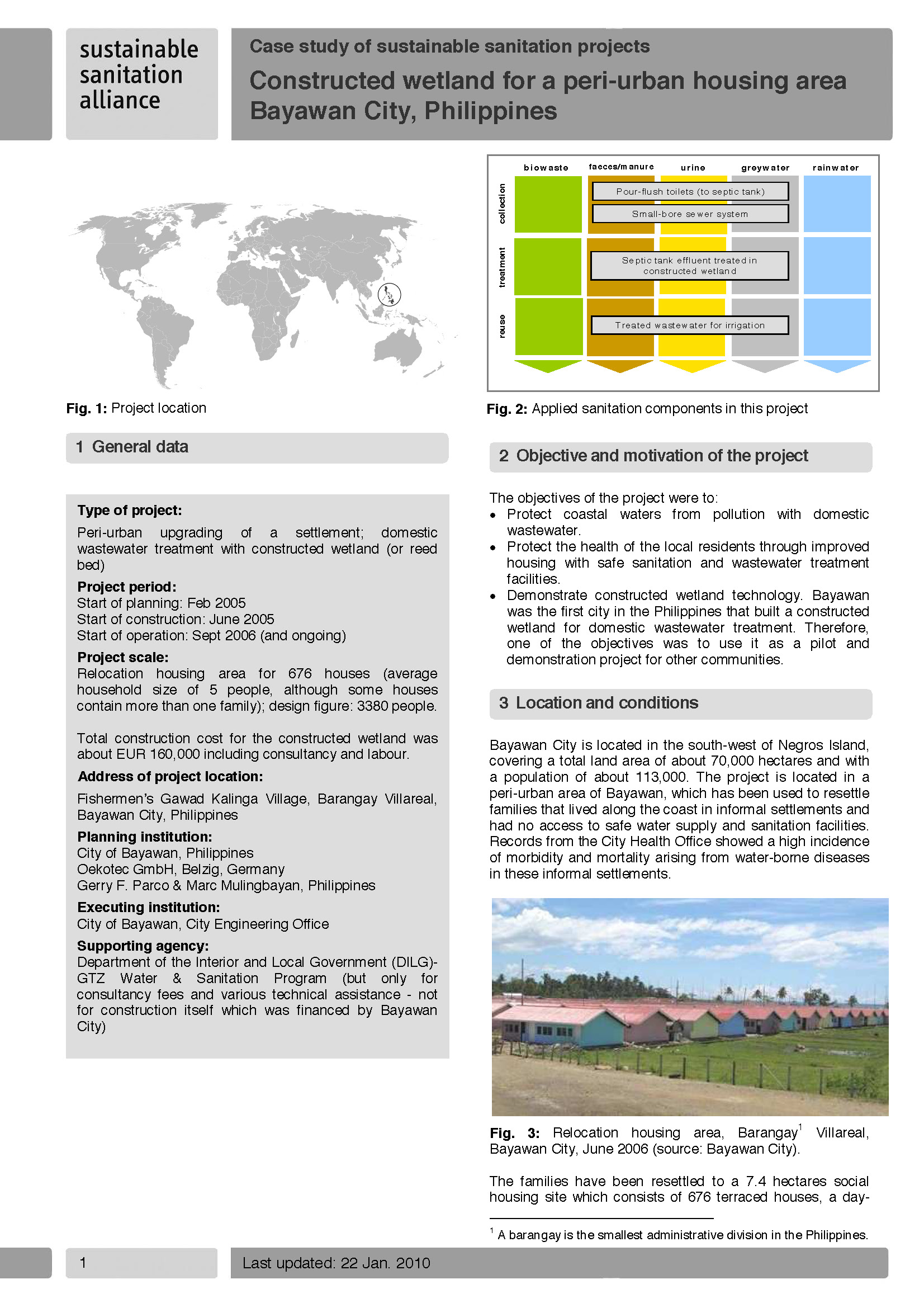Constructed wetland for a peri-urban housing area Bayawan City, Philippines - Case study of sustainable sanitation projects
Lipkow, U., von Münch, E. (2010)

Published in: 2010
Publisher:
Sustainable Sanitation Alliance (SuSanA)
Author:
Lipkow, U., von Münch, E.
Uploaded by:
SuSanA secretariat
Partner profile:
common upload
22892 Views
751 Downloads
Location of library entry
Content - Summary
This case study is about the upgrading of a peri-urban settlement by treating the domestic wastewater using constructed wetlands (or reed beds). The project serves approximately 3380 people and was implemented by GTZ on behalf of the German Ministry BMZ. Total construction cost for the constructed wetland was about EUR 160,000 including consultancy and labour. The construction was carried out by the City Engineering office from May 2005 to August 2006.
The objectives of the project were to protect coastal waters from pollution with domestic wastewater on the one hand and health of local residents through improved housing with safe sanitation and wastewater treatment facilities on the other hand. Since Bayawan was the first city in the Philippines that built a constructed wetland for domestic wastewater treatment, another objective was to use it as a pilot and demonstration project for other communities.
The houses in the resettled fishermen’s village have pour flush toilets. The wastewater from the toilets, bathrooms and kitchen sinks is partially treated in septic tanks where solids are settled and the organic load is reduced. The liquid portion of the wastewater (overflow from septic tanks) is transported through a small-bore sewer system towards the main sump for storage and additional solids removal. From there, the wastewater (septic tank effluent) is pumped into four header tanks and then flows by gravity into the first cell of the constructed wetland, which is a vertical soil filter. The second cell is a horizontal soil filter. The faecal sludge from the septic tanks will be treated in drying beds that are located at the sanitary landfill.
The combination of septic tanks, small-bore sewers and constructed wetland was built because the construction of the houses in the relocation area was already in progress when the City of Bayawan decided to upgrade the treatment process. The city looked for an affordable and reliable treatment technology that could easily be implemented, operated and maintained. Both cells of the wetland were built of concrete and concrete blocks to prevent contact between groundwater and wastewater.
Through information campaigns during the implementation phase of the wetland project as well as during the training sessions of the organic farming project, residents have learned of the potential benefits of using treated wastewater.
Bibliographic information
Lipkow, U., von Münch, E. (2010). Constructed wetland for a peri-urban housing area Bayawan City, Philippines - Case study of sustainable sanitation projects. Sustainable Sanitation Alliance (SuSanA)
Filter tags
Case studies in SuSanA template Constructed wetlands East Asia & Pacific English Greywater or wastewater Peri-urban















